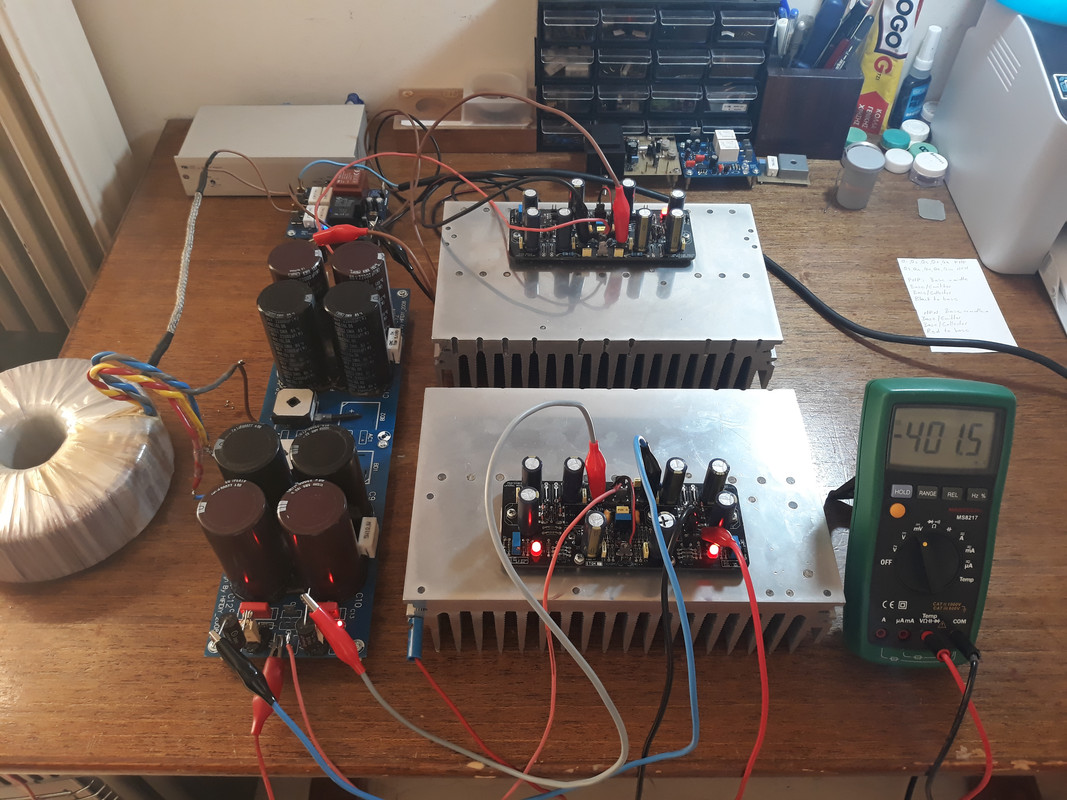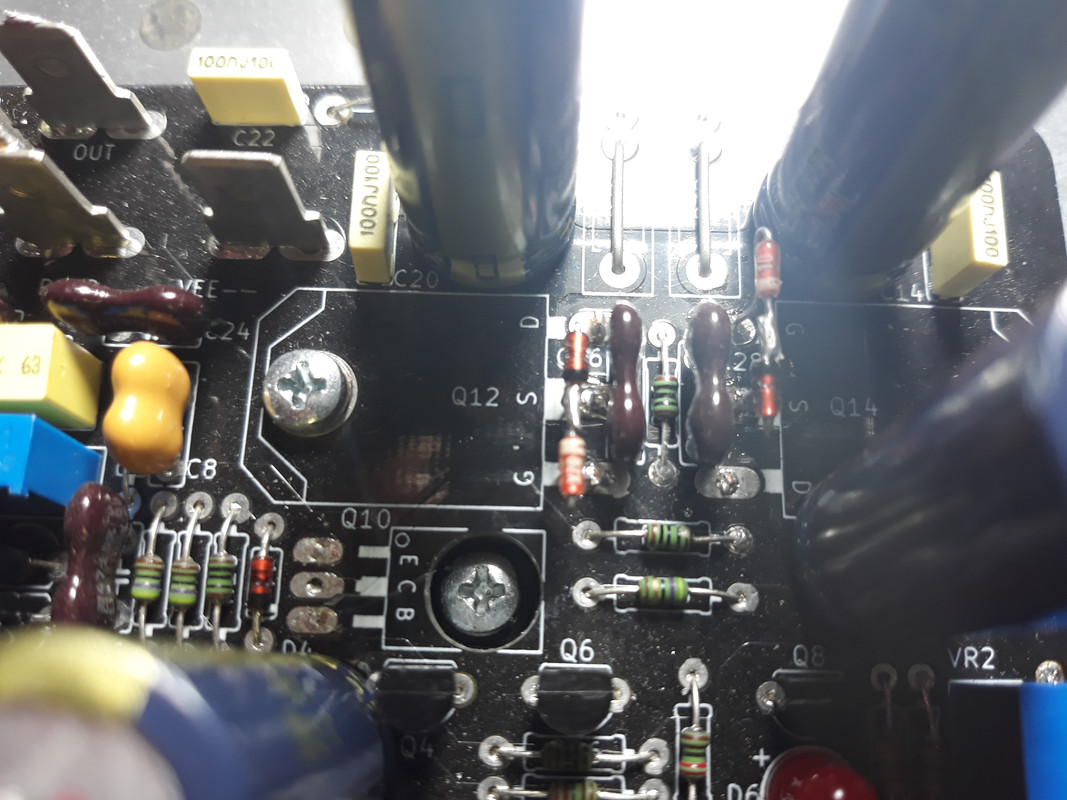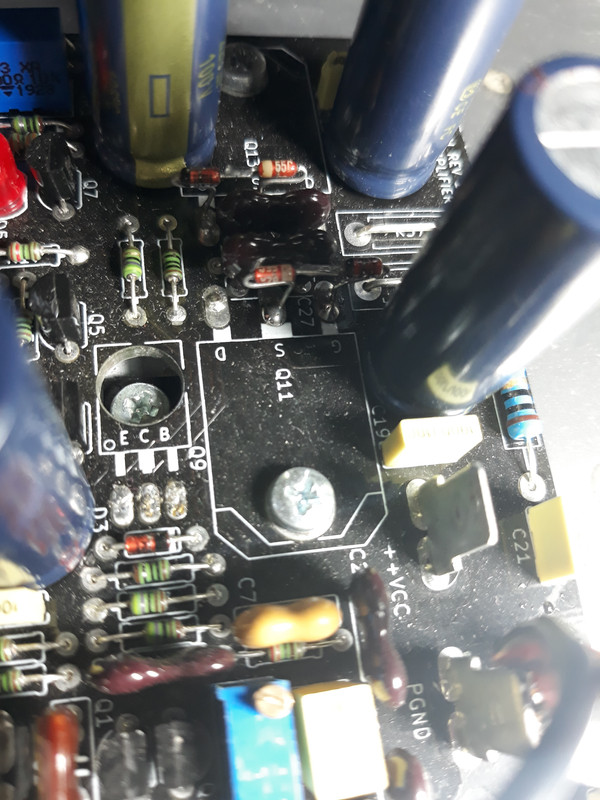Hi shaan,
Beginning a BOM for the V4H. I have the older boards, so will be doing the Revision 1 update. Do I order the Revision 2 BOM as shown on the 1st page?.
A little confused and want to order the correct components. Thanks for the help.
MM
Hi Kokanee.
Get the Rev2 BOM. Since you will be starting on bare PCBs, you can easily do both Rev1 and Rev2 upgrades on it before placing the electrolytics. Let me know when you have everything ready and I will guide you through the process.
Along with the BOM components get 8 x 1N4148 and 8 x 10V Zener (500mW). Since these diodes come pre-soldered on the Rev2 boards, they are not mentioned in the BOM.
Last edited:
GB UPDATE:
Torvbakkane - 6 PCBs - PAID
Faizal Mansar Alam - 2 MODULES - PAID
J.M.K - 4 PCBs - PAID
prairieboy - 2 PCBs - PAID
Pistollero - 2 PCBs + MOSFETS - PAID
RobSoet - 4 PCBs + MOSFETS - PAID
Rick G - 4 PCBs - PAID
blek stena - 2 PCBs - PAID
nrabbit - 2 PCBs + MOSFETS - PAID
deps - 2 PCBs - PAID
Greg1017 - 2 PCBs + MOSFETS - PAID
Torvbakkane - 6 PCBs - PAID
Faizal Mansar Alam - 2 MODULES - PAID
J.M.K - 4 PCBs - PAID
prairieboy - 2 PCBs - PAID
Pistollero - 2 PCBs + MOSFETS - PAID
RobSoet - 4 PCBs + MOSFETS - PAID
Rick G - 4 PCBs - PAID
blek stena - 2 PCBs - PAID
nrabbit - 2 PCBs + MOSFETS - PAID
deps - 2 PCBs - PAID
Greg1017 - 2 PCBs + MOSFETS - PAID
Hi Shaan, today I've finished the amplifier setup, after trimming and biasing everything seems to work fine, only thing to mention is that during offset trimming starting reading on one channel was about -300mV so I had to do a few adjustments while on the other channel starting reading was -90mV and fewer adjustments were needed.
I've added the diode/zener protection network too



I've added the diode/zener protection network too



Thanks shaan, will let you know when I begin. Is there a BOM already for the PSU's.?
MM
Hi MM.
Yes, BOM link is shared in post1 of PSU thread.
Hi Shaan, today I've finished the amplifier setup, after trimming and biasing everything seems to work fine, only thing to mention is that during offset trimming starting reading on one channel was about -300mV so I had to do a few adjustments while on the other channel starting reading was -90mV and fewer adjustments were needed.
I've added the diode/zener protection network too
 🙂
🙂The difference in offset between the two channels is a function of the gains of the BJTs. Nothing problematic.
It looks like you used 0.125watt rated resistors, which may heat up when volume is high. Or are these 0.25watt?
The resistors are Royal Ohm MF004, according to the dataheet they are rated 0.4W, 1% http://www.royalohm.com/pdf/product2017/PrecisionMetalMF.pdf
but they are extra small size.
but they are extra small size.
Hi shaan,
I have the PeeCeeBee V4H rev. 1 boards, which I have just started on and I notice your Rev. 2 changes. I can see how to add the 1N4148 and 10V zener protection to the Mosfets easy enough. Can you advise your method to add the R39/R40 resistors to the collector's of Q3 and Q4 to GND.
I assume the easiest is to cut the tracks and add the resistors to the back of the boards - is this your preferred method?
regards,
Gary..
I have the PeeCeeBee V4H rev. 1 boards, which I have just started on and I notice your Rev. 2 changes. I can see how to add the 1N4148 and 10V zener protection to the Mosfets easy enough. Can you advise your method to add the R39/R40 resistors to the collector's of Q3 and Q4 to GND.
I assume the easiest is to cut the tracks and add the resistors to the back of the boards - is this your preferred method?
regards,
Gary..
Hi Gary
That's exactly the way.
 🙂
🙂
I assume the easiest is to cut the tracks and add the resistors to the back of the boards...
That's exactly the way.
 🙂
🙂Thanks shaan, had a good look at the tracks, and very easy to do to add the two collector resistors for Q3 and Q4.
Preamp final development update:
I have been deep into the preamp design working out one problem at a time. Well, currently there is no performance related problem that needs to be solved - the preamp is fast and stable, quiet and sweet. There was one last thing that I wanted to see if could be done with the 2nd harmonic (since we are really into business with harmonics this time 😀 ).
The second harmonic's attack is now phase-aligned with main signal's attack, regardless of main signal's absolute phase!
This means that, in normal phase the positive going part of the main signal is accompanied by a positive going 2nd harmonic. And if you invert speaker polarity (180deg inverted phase) then the negative going part of the main signal is accompanied by a negative going second harmonic. For a sinewave it doesn't matter much, but for music transients it makes a massive difference in perceived quality, speed and detail. There is nothing better when the 2nd harmonic is adding to the "push" of the main signal!
The interaction between the main signal and the second harmonic matters most in the "Attack" segment of the signal as this particular segment is the very first acoustic connection between the system and the listener, and has the most significant effect on the overall appeal of the acoustic production. I'm happy to let you know that now the interaction is seamless. Attached a shot from the simulation, red- main signal, green- 2nd harmonic.
And it is sounding truly magnificent in my system. Soon to be revealed, so stay tuned!
 🙂
🙂
I have been deep into the preamp design working out one problem at a time. Well, currently there is no performance related problem that needs to be solved - the preamp is fast and stable, quiet and sweet. There was one last thing that I wanted to see if could be done with the 2nd harmonic (since we are really into business with harmonics this time 😀 ).
The second harmonic's attack is now phase-aligned with main signal's attack, regardless of main signal's absolute phase!
This means that, in normal phase the positive going part of the main signal is accompanied by a positive going 2nd harmonic. And if you invert speaker polarity (180deg inverted phase) then the negative going part of the main signal is accompanied by a negative going second harmonic. For a sinewave it doesn't matter much, but for music transients it makes a massive difference in perceived quality, speed and detail. There is nothing better when the 2nd harmonic is adding to the "push" of the main signal!
The interaction between the main signal and the second harmonic matters most in the "Attack" segment of the signal as this particular segment is the very first acoustic connection between the system and the listener, and has the most significant effect on the overall appeal of the acoustic production. I'm happy to let you know that now the interaction is seamless. Attached a shot from the simulation, red- main signal, green- 2nd harmonic.
And it is sounding truly magnificent in my system. Soon to be revealed, so stay tuned!
 🙂
🙂Attachments
With what little I know of the design, I must say this is a unique approach.
First time on this planet?
Big congrats to Shaan for his enterprise (!) in going where most others fear to tread!!
We can't wait...!
First time on this planet?
Big congrats to Shaan for his enterprise (!) in going where most others fear to tread!!
We can't wait...!
Thank you.
It's a first time for me, don't know about the planet hehe (soon will though). I'm just lucky to have people look my way sometimes.
It's a first time for me, don't know about the planet hehe (soon will though). I'm just lucky to have people look my way sometimes.
Last edited:
I got my KSE350 / KSE340 pairs from ebay today. The hFE of the 340s is 120 and 110, but I'm measuring the hFE from the 350s as 2 and 13. Think they are broken?
Attachments
Last edited:
If you are connecting all the pins correctly to the meter then they probably are broken.
Edit: Checked the attached pic. All four look fake to me. 🙁
Edit: Checked the attached pic. All four look fake to me. 🙁
Last edited:
Do'h. Going to pick up some MJE350/40s from a reputable vendor then since I can't find KSEs in stock anywhere.
There is nothing better when the 2nd harmonic is adding to the "push" of the main signal!
And yet...
Reverted back to inverted phase second harmonic. In short, phase-coherent second harmonic sounds awful compared to inverted phase second harmonic, and I have NO IDEA why! Does our brain prefer the out-of-phase second???

Preamp thread going online shortly. More information about this will be posted there. Thanks to everyone waiting.
- Home
- Group Buys
- PeeCeeBee V4H GB

